


Navigating a baby’s sleep schedule can feel like an endless puzzle. Just when you finally get the hang of it, a new problem suddenly appears— your baby wakes up frequently throughout the night. This is a common and challenging phase known as sleep regression.
Keep reading to understand better what sleep regression is, its causes, common sleep regression ages, and more.
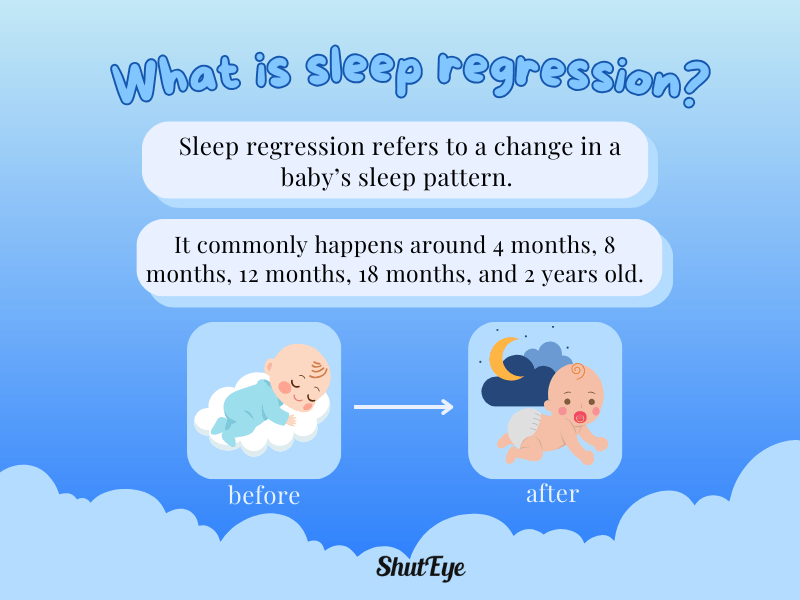
Sleep regression refers to a change in a baby’s sleep patterns. This change usually occurs all of a sudden when a baby who once slept well, is no longer able to fall asleep at night [1].
A baby’s sleep regression is part of their developmental milestones. According to sleep experts, sleep regressions vary across infants but are most commonly observed to take place around 4 months, 8 months, 12 months, 18 months and 2 years old [2].
The first regression that happens at 4 months often occurs as a result of developmental changes, teething, or growing pain [2].
The cause behind sleep regression still remains unclear. However, several factors are thought to contribute to this.
Some potential causes include [3]:
See also: How To Sleep When Anxious: Techniques to Try
Sleep regressions occur during a baby’s early stage of growth. It starts from as early as 4 months of age to 2 years of age.
In this section are more details about each stage of sleep regression, what happens, and why it happens.
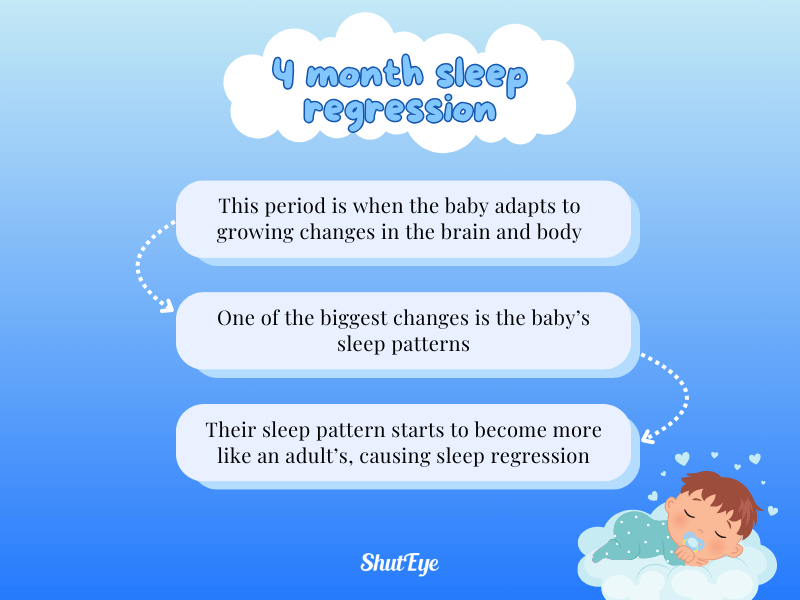
The first stage of sleep regression for babies begins when they reach 4 months of age. Not all babies would experience this; some may even experience it a month earlier or later.
During this period, the baby is rapidly growing. This means that the baby will have to adapt to the growing changes in the brain and body.
One of the biggest changes would be the baby’s sleep patterns. Newborns tend to sleep in short intervals with each sleep lasting 20 to 50 minutes long. At the age of 4 months, their sleep pattern will start to shift to be more like an adult’s sleep patterns.
With the time needed to adjust to these changes, the baby will naturally go through sleep regression.
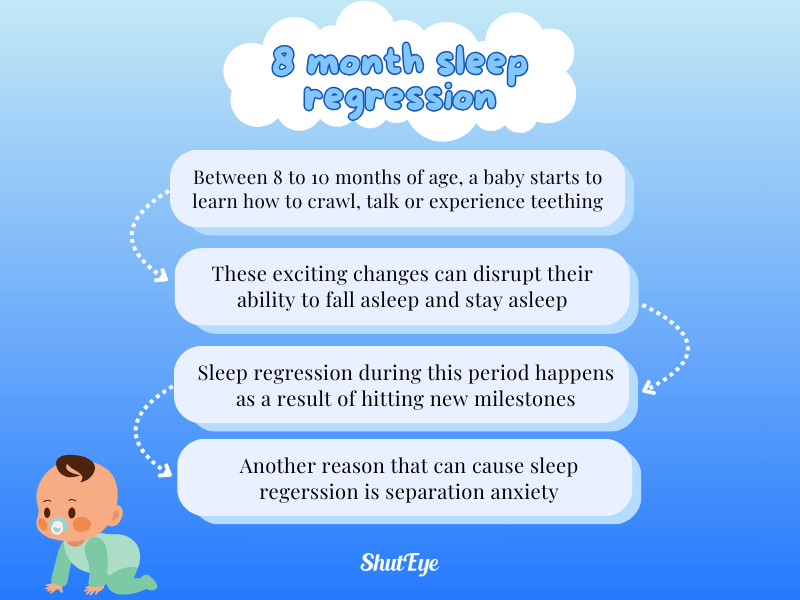
This 8-month sleep regression typically happens as a result of hitting new milestones in life.
Between 8 to 10 months of age, the baby would start to learn how to crawl, talk, or experience teething. All of these are new experiences that can be very exciting for the baby. When the baby is constantly excited, it may disrupt their ability to fall asleep and stay asleep.
Another reason why sleep regression happens at this stage is because of separation anxiety. Separation anxiety is a normal process that babies face as they start to gain awareness of their surroundings.
If a caregiver who they are attached to leaves, it may trigger a sense of anxiety and cause them to cry. Thus, disrupting sleep. If this happens to your child often, you might want to try sleep training.
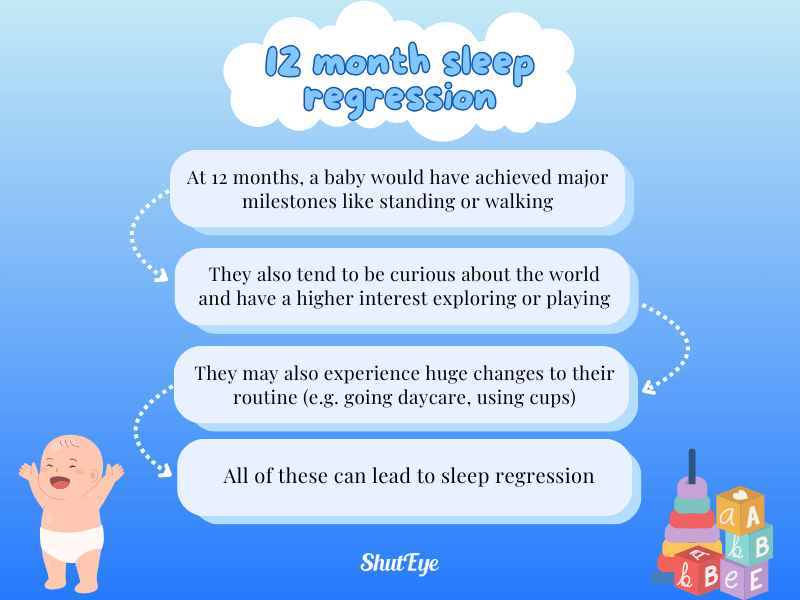
At 12 months old, a baby would have achieved major milestones such as standing or walking around with support. They may also be able to hold on to objects and understand and verbalize simple words.
They are likely to be very curious about the world around them and have a higher interest in exploring or playing. So, instead of going to bed, they would rather play with that newfound shiny object on the floor.
They may also experience huge transitions during this period as some parents start to view them as young toddlers. Maybe there are changes to their routine such as enrolling in a daycare, switching from using bottles to cups or having a new sleep schedule to follow.
All of these can lead to sleep disruptions or sleep regression.
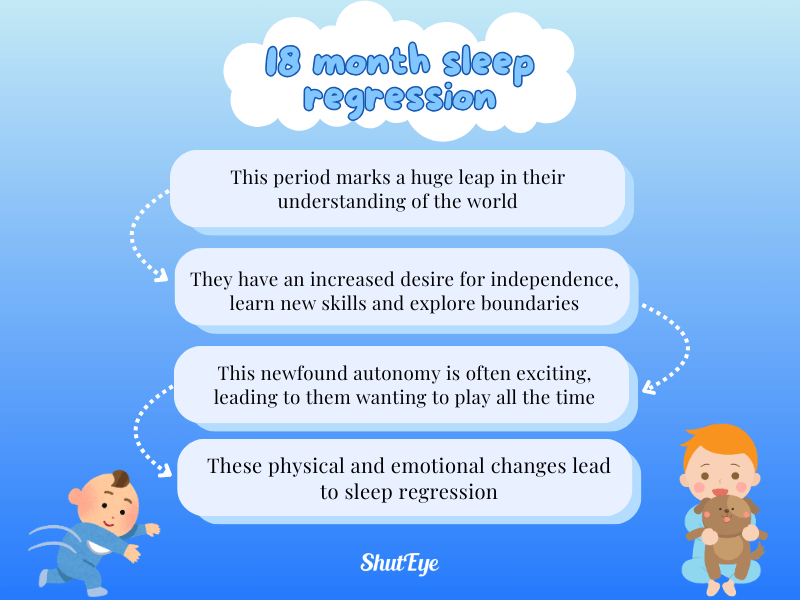
At 18 months, a child might experience sleep regression due to continued physical and emotional development.
This stage marks a significant leap in their understanding of the world around them, especially when they realize they have the ability to make decisions. If they don’t want to go to sleep, they can choose not to. If they want to run around and play, they now realize the freedom that they can do so.
They have an increased desire for independence, to learn new skills, to explore boundaries, and to test limits. This newfound autonomy can be exciting and may lead to a change in your toddler’s sleep patterns or sleep regression as they prioritize play over sleep.
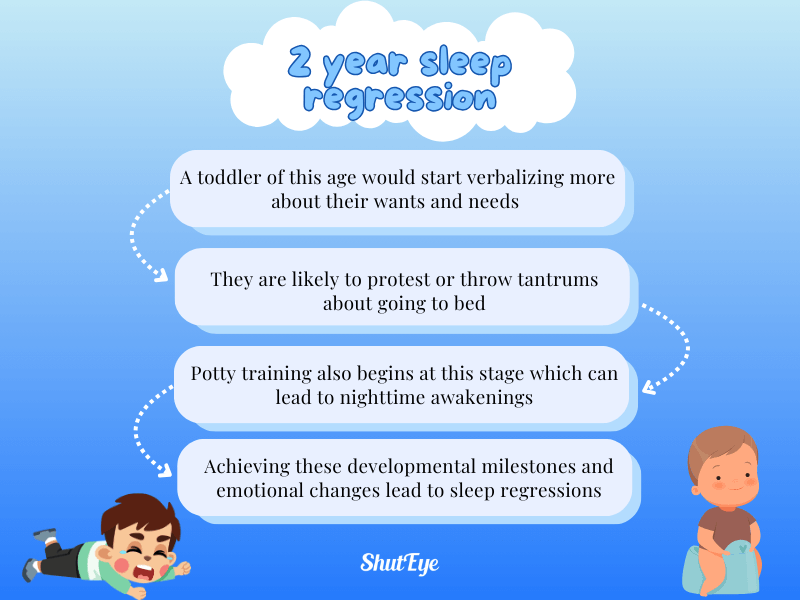
Around 2 years old is when your toddler may experience another phase of sleep regression. This is due to achieving developmental milestones and emotional changes.
A toddler of this age has likely started verbalizing more— expressing their wants and needs strongly. You may find that they may start to test boundaries more frequently by protesting against going to bed or throwing tantrums to get their way.
Additionally, this time is when potty training begins, which can lead to nighttime awakenings as your toddler becomes more aware of their bodily functions.
These are the common reasons a toddler would have sleep regressions at this age.
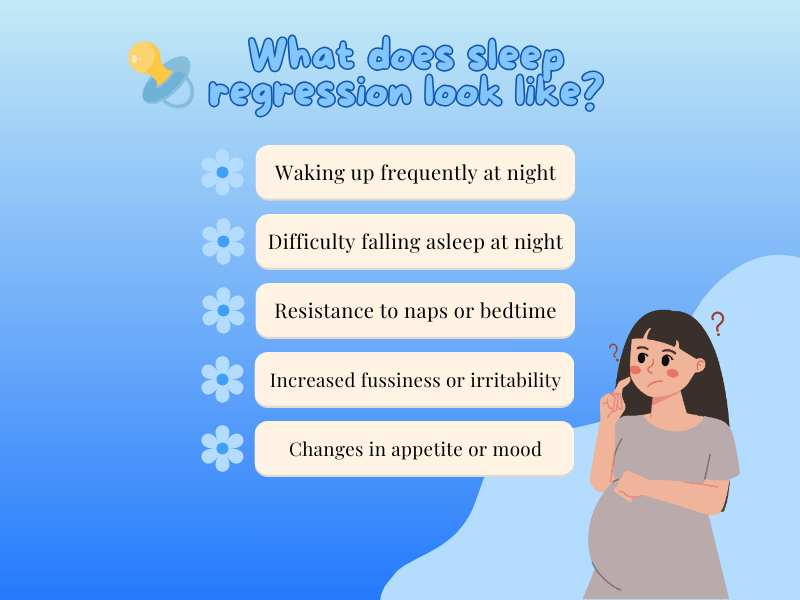
Sleep regression manifests itself in different ways. Here are some signs of sleep regression:
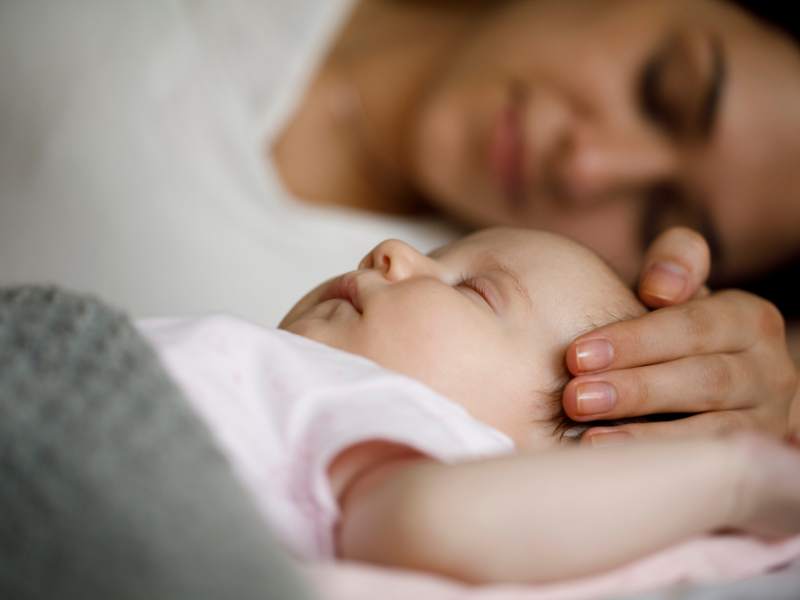
To cope with the challenges of sleep regression and help your baby sleep better, here are some tips parents can employ.
Establishing a consistent sleep schedule can encourage better sleep patterns and help regulate your child’s internal clock. It is important to regulate this internal clock as it can affect all aspects of your life [4].
Stick to regular wake-up times, naptimes, and bedtimes to minimize sleep disruptions or the inability to fall asleep.
To find out the best time for your child to sleep and wake up, try out our sleep calculator.
Doing calming activities as part of a pre-bedtime routine can help your child associate that it is time to wind down and fall asleep.
Some activities that help to calm your child’s mind and relax before bedtime include taking a warm bath, listening to gentle music, doing a puzzle, and reading a bedtime story.
Another thing that you can do as a parent is to ensure that you create a conducive sleep environment for your child.
Ensure that your child has a comfortable mattress to sleep on and keep the room dark and quiet. You may consider using a pacifier and putting a soft and soothing lullaby for your baby to fall asleep to.
Playing soft music or white noise helps to out any disruptive sounds that might wake your child during the night.
Consider using white noise machines or apps such as ShutEye® for a consistent, soothing background sound that helps your child stay asleep longer. Gentle lullabies or calming nature sounds can also be effective in helping your child relax and fall asleep more easily.
Understandably, these periods can be frustrating for any parent. Fortunately, it is only temporary and you can better manage the situation by remaining patient and consistent with your approach.
Stick to the routines you’ve established, even when it feels challenging. This consistency will provide a sense of reassurance for your child, making it easier for them to adjust and return to a more stable sleep pattern.
If your child’s sleep disruptions persist for a long time (e.g. more than a month) then it is probably time for you to consult a pediatrician or doctor for help.
Additionally, you should also consult your healthcare provider if you notice that your child exhibits these changes:
While sleep regressions can be challenging for parents to navigate, it is a normal part of a baby’s development. Recognizing the signs of sleep regression and establishing healthy sleep habits like a consistent sleep schedule, gentle background music or white noise, doing calming activities, and being patient can help parents get through these difficult periods with ease.
If you are looking for tips, sleep sounds or stories to help you sleep better, try out our patented sleep-tracking app, ShutEye®. ShutEye® monitors and analyzes your sleep schedule for detailed insights to help you improve your sleep.
Grech, O. (2022) What is Sleep Regression? [online]. Available at: https://www.news-medical.net/health/What-is-Sleep-Regression.aspx Morgan, K. (2023) Object Permanence: How Do Babies Learn It? [online]. Available at: https://www.webmd.com/baby/what-age-do-babies-have-object-permanence Penn Medicine Lancaster General Health (2022) Understanding and Navigating Sleep Regressions [online]. Available at: https://www.lancastergeneralhealth.org/health-hub-home/motherhood/the-first-year/understanding-and-navigating-sleep-regressions Robert, M. (2023) Causes and Strategies of Sleep Regression [online]. Available at: https://www.longdom.org/open-access/causes-and-strategies-of-sleep-regression-101962.html